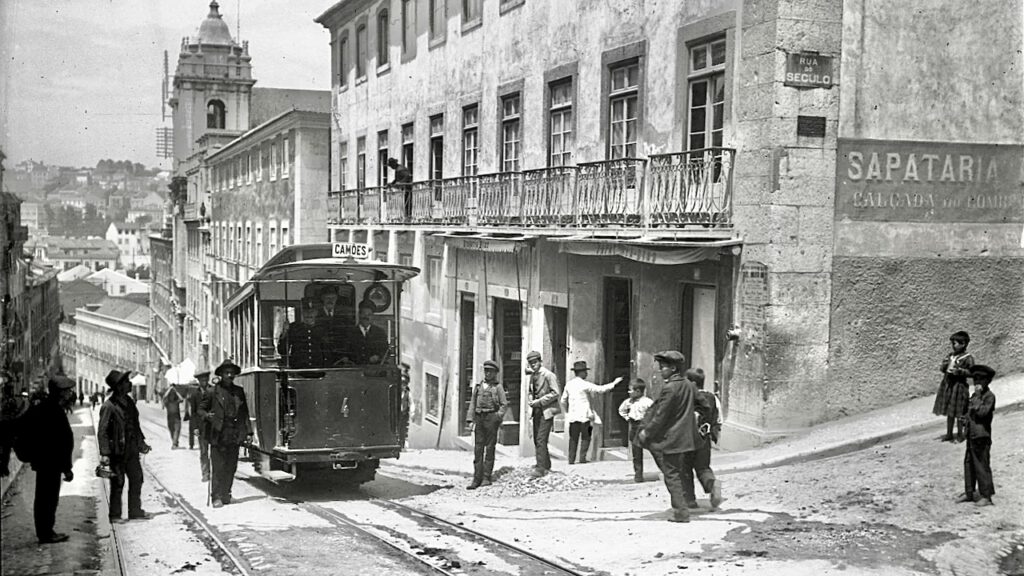
Lisboa is built on hills. Mule or horse trams could only go up the steep gradients with the use of extra animals. As the animals were the largest cost of the whole tram operations, it was a too costly affair to have many or long steep inclines within the network. In 1873 in San Francisco a system was introduced employing a cable running continuously in a conduit below the track, which could be picked up or released by a gripper with metal jaws suspended from the car and passing through a slot in the road. Many such systems were built in America and other countries. Also in Lisboa three cable tramlines were constructed, all with a gauge of 800 mm.
Estrela
The Nova Companhia de Ascencores Mechanicos de Lisboa (NCAML) which operated already the Lavra and Gloria funiculars, opened its first cable tramline on 15 August 1890. The route was from Largo de Camões via Rua do Loreto, Largo de Calhariz, down the steep (12% over about 200 m) Calçada do Combro, Rua dos Poias de São Bento and up the steep (10% over about 500 m) Calçada da Estrela to Largo da Estrela. The length was 1.7 km. The depot and winding house were located at Estrela. The installations came from the Maschinenfabrik Esslingen.
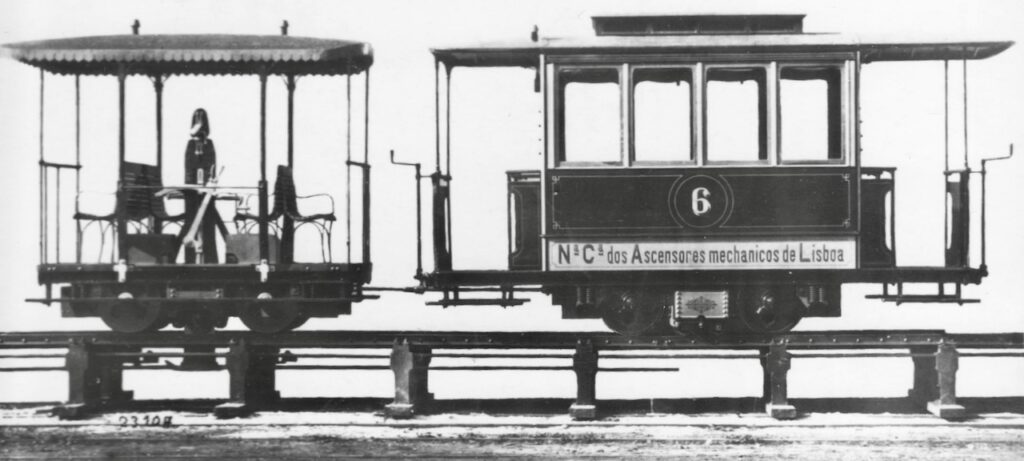
Photos, included a works photo of Esslingen, show open grip cars with closed trailers. There were six of these combinations with capacity for 8 on the grip car and 24 in the trailer. Most of these combinations were replaced in 1896 by larger closed cars which were operating as single units with the gripman on the front platform. They looked quite similar to the trailers but had five windows instead of four. The line was double track over most of its length, but single track in the narrow Rua dos Poiais de São Bento. The system used a side slot in the left rail.
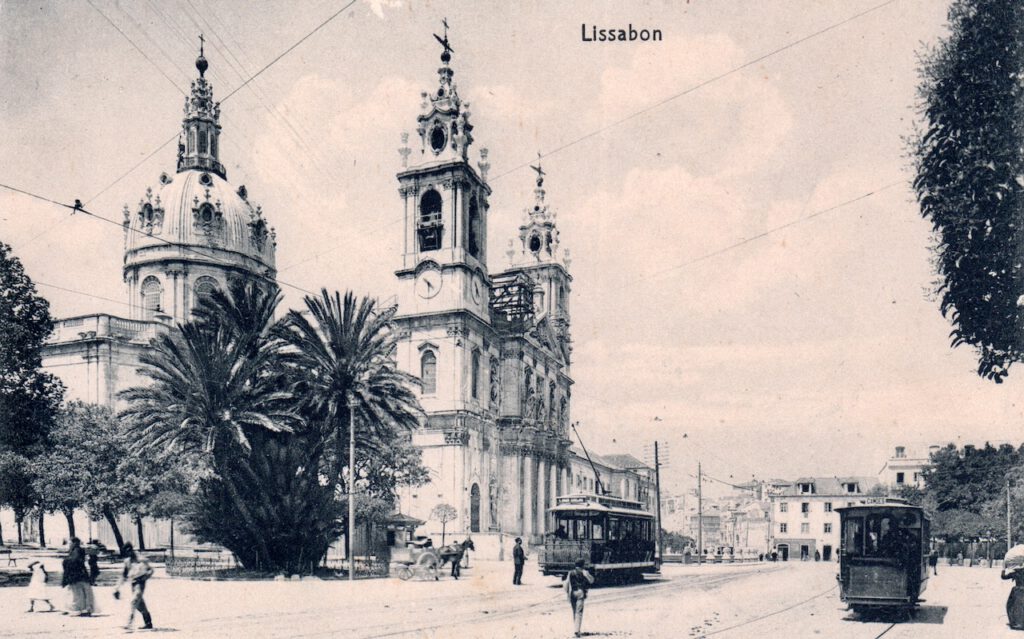
The trams were unidirectional which meant that they had to be turned at the termini. At Camões was a turning loop in the north-east corner of the square. The tramcars went through the loop by gravity taking advantage of the local existing light incline. At Estrela a turntable was used that also was connected to the spur into the depot.
The cable tramline, nicknamed “Maximbombo”, was closed on 3 July 1913. On 1 March 1914 the replacing electric tramline 28 was opened.
Graça
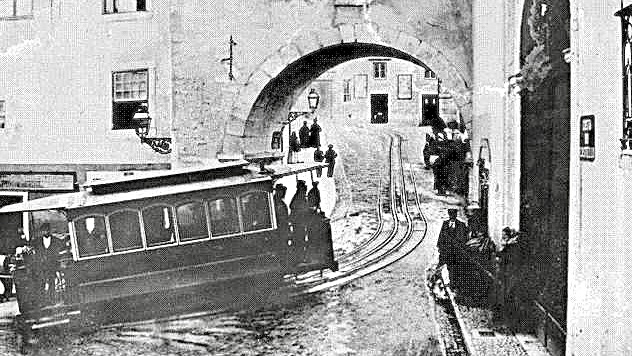
The Graça cable tramline was opened by the NCAML on 26 March 1893. It had its downtown terminus on Largo Fernandes da Fonseca where now is the northern end of Martim Moniz at the corner of Rua da Palma. The about 1000 metre long route, with for over 400 m a gradient of ≥10% and an average gradiënt of almost 7%, went up through Rua dos Cavaleiros, Calçada de Santo André, passing under the Arco de Santo André, up the Calçada da Graça to terminate at the north end of Largo da Graça. Depot and winding house were in Rua da Graça, almost 200 m from the terminus. The line had double track, but interlaced at the narrowest points. The system used a central slot and the cars were bi-directional. The two tight curves at the top of the Calçada de Santo André and the bottom of the Calçada da Graça couldn’t be passed with use of the relative fast moving main cable. On this section an auxiliary slow moving cable was used.
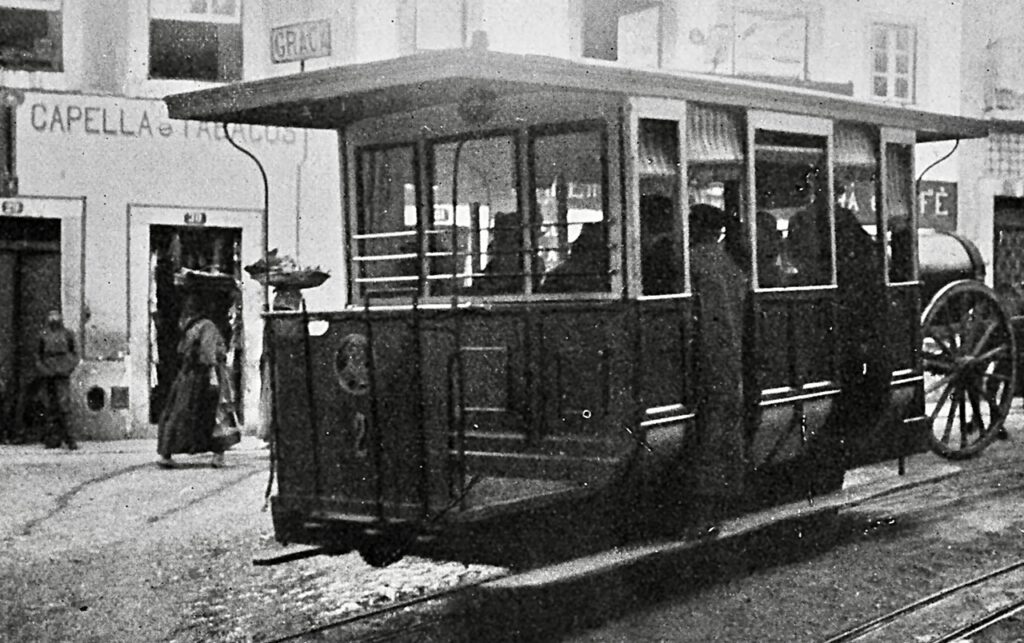
Photos show two types of cars. The originals were closed cars with five or six top curved windows at each side, longitudinal benches and roofs with a clerestory. After 1897 also a half open type with cross-benches and flat roofs was used. The line was closed on 25 May 1913. The Arco de Santo André was demolished to give space to the replacing electric tramline, opened on 1 January 1915. It didn’t go up all the way to Graça but connected at the top of the Calçada de Santo André with the already existing short branch at São Tomé of the electric line via Rua do Limoeiro and Escolas Gerais to Graça.
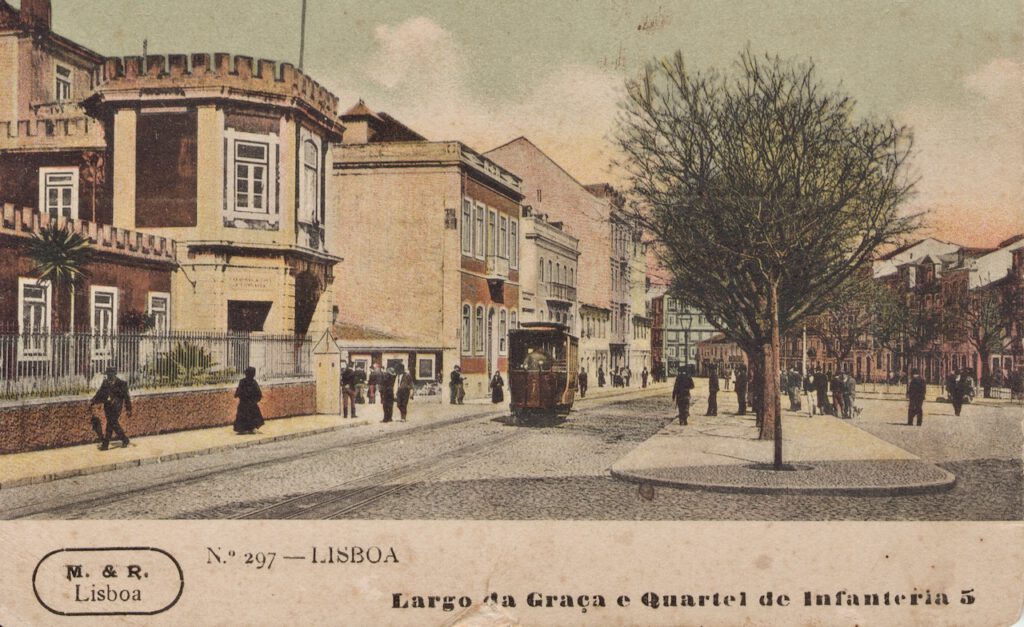
It’s unknown how many cars were available for the NCAML cable tram lines, but after they were closed (Graça 25 May 1913 and Estrela 3 July 1913), there was an advertising of the NCAML in the Diario de Notícias of 8 July 1913 offering for sale 13 closed and several open cars. The ad said they were suited for use as e.g. beach house or guards shelter.
São Sebastião
The third cable tramline, the ascensor de São Sebastião, was the sole realised line of the Companhia de Viação Funicular (CVF). The line was opened on 15 January 1899. The downtown terminus was on Largo de São Domingos aside to the Teatro Dona Maria II. From there it followed the route Ruas Portas de Santo Antão – São José – Santa Marta – São Sebastião da Pedreira, with the terminus on the Largo de São Sebastião da Pedreira. The winding house and the depot were just across the Estrada de Circunvalação (now Rua Marques de Fronteira) about 200 meter from the terminus. The length of the line was about 2.6 km and it had double track except for a short section in Rua de São José with interlaced tracks. A side slot in the left rail was used for the cable and the cars were bidirectional.
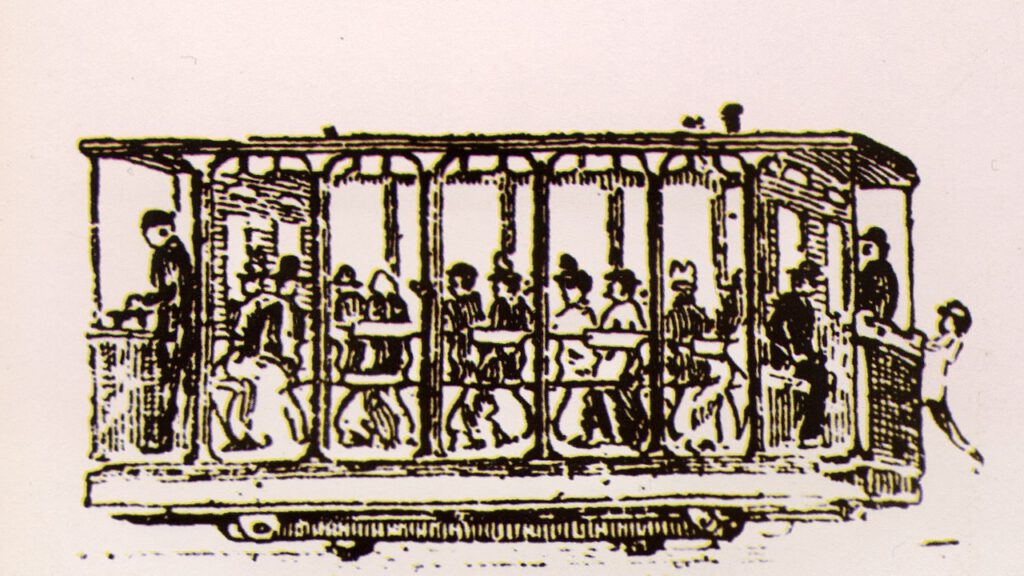
Although no photos are known, it appears there were on the moment of opening in 1899 four open cross-bench cars with six benches. Two closed cars were added to the fleet in the first half of 1900. All six cars were locally built. While both the Estrela and Graça lines had long gradients of at least 10% over large parts of their routes, the São Sebastião line did only have a few short sections of about 7% but was for about half its length close to only 2 to 3 % and had no gradient at all for the rest of the line. During its existence the line suffered major technical problems causing several times complete shutdowns. On 3 January 1901 the cable broke. The CVF was also financially broken. The tramcars remained paralysed on the street for many months but the line was never reopened.
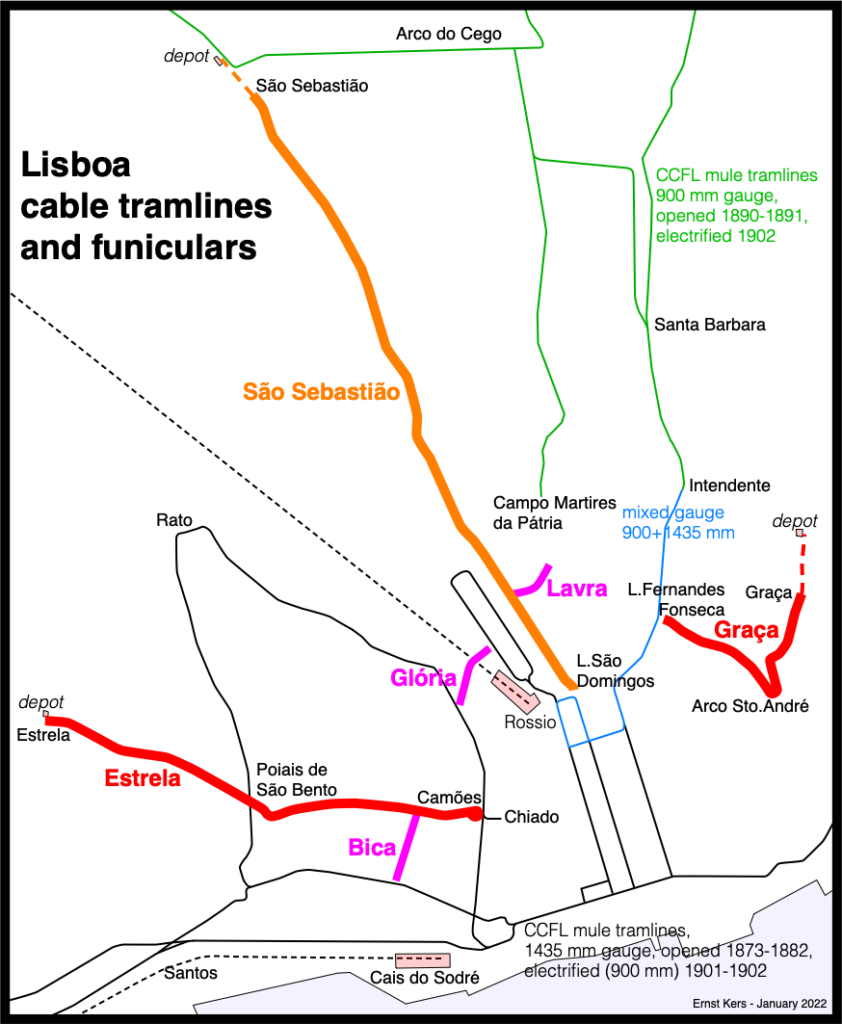

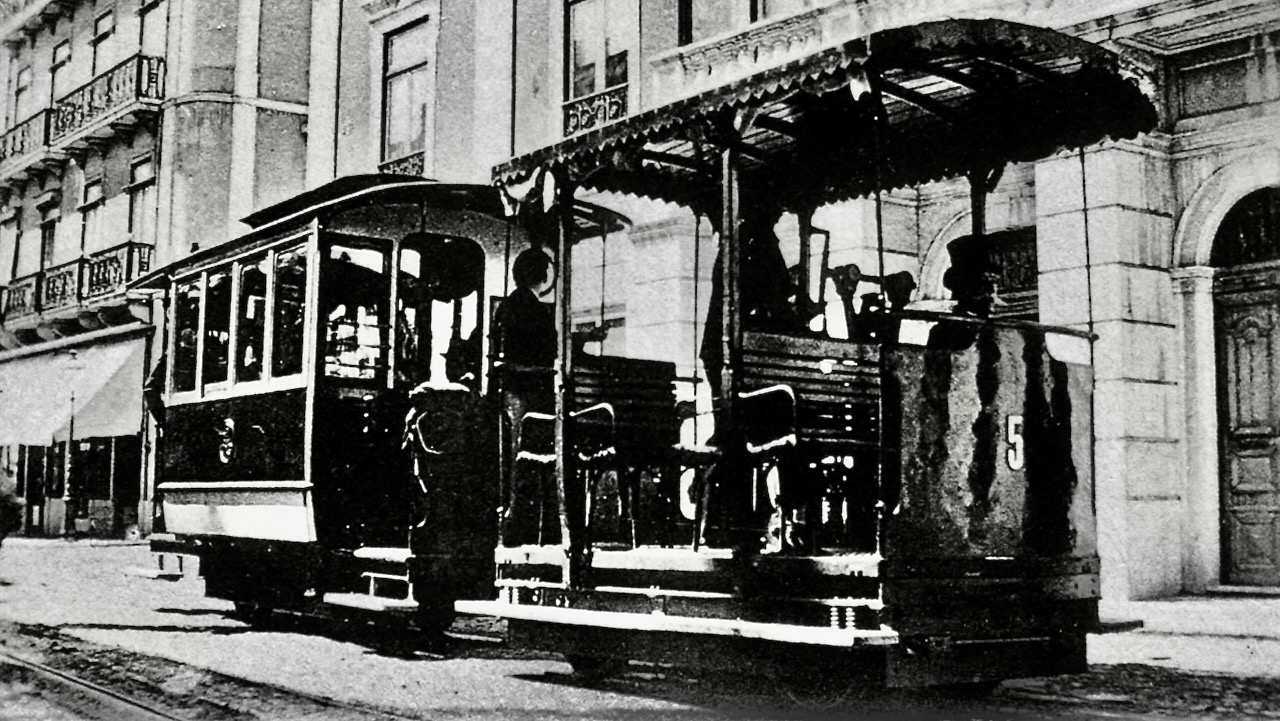
Leave a Reply